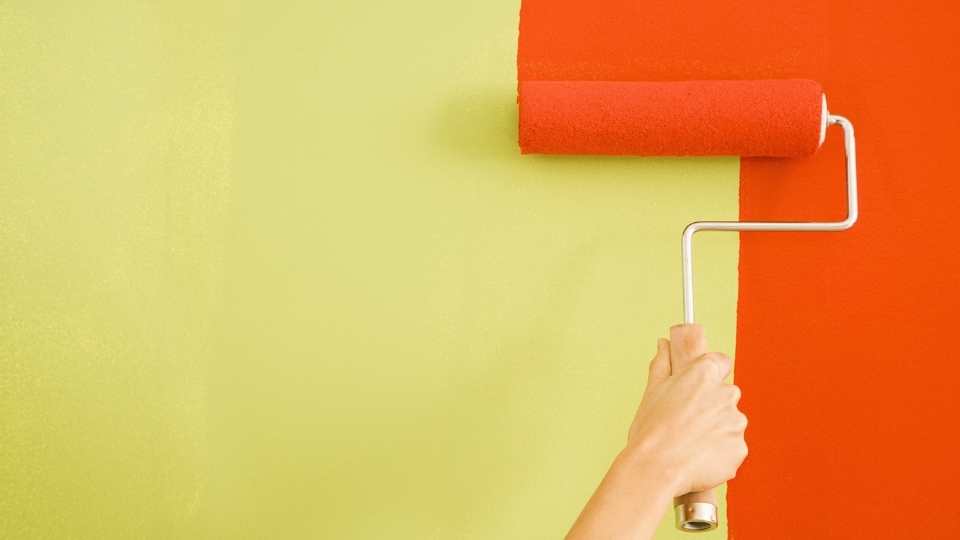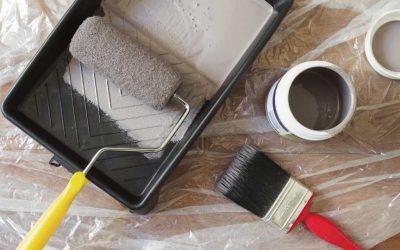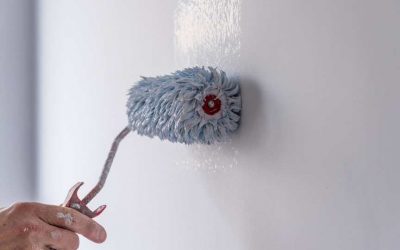Cool Wall And Ceiling Painting Ideas
- Make Your Walls And Ceilings Stand Out Many homeowners believe that a wall should be color. Those daring enough may add an accent wall. Artists, on the other hand, see the wall as a blank canvas. Cool painting ideas make a statement.
- Waves Instead of stripes, create sweeping waves on your wall. Use complementary hues to make your piece stand out. This is a terrific method to include additional colors. Create lines with painter’s tape or freehand it.
- Make a visual installation by painting your wall a contrasting hue. Forget the symbols. Be vague. Arrange the colors in a nice mishmash. Consider wavy, crossing lines or a color burst from the wall’s center.
- Painters tape is great for creating a clean border between two colors. Have you considered additional uses? Rip the tape lengthwise to create distinctive lines and motifs. Your painted edge will be jagged from the ripped tape.
- Typography Make your environment your own with typography. Make a monogram for the kids’ rooms. Set the tone for the space with a quote or statement. Pick something that speaks to you and hang it on the wall daily. Identify workplace areas with letters or numbers. It serves two purposes: aesthetics and navigation.
- Stripes are classic and popular. They also have various looks. You can go wide, thin, mix them, or change directions. Stripes have virtually unlimited applications. Two colors are excellent but don’t stop there. Using bright colors on a dark wall adds depth.
- Chevron is a simple and effective method to style a wall. Color-coordinate your area or choose an accent that complements existing furniture. It can be used as an accent wall or to connect two adjacent walls.
- Nowhere can you avoid ombre. This style is versatile and stylish without being overly specialized. An ombre is easier to create than a stripe or chevron. Aside from bright to dark, the ombre has no rules. Take a risk and ombre sideways or upside down.
DIFFERENT TYPES OF PAINT
- Oil-based paints offer superior surface penetration and adherence than water-based paints, making them ideal for covering stains. They’re tough, water-resistant, and less expensive. Oil-based paints are dependable and long-lasting. They work well for trimming. The disadvantage is that they take up to 24 hours to dry, which might be inconvenient in some instances.
- Water-based paints have several advantages over oil-based paints. They dry faster, have less odor, and are easier to clean. That makes them ideal for interior walls. Water-based paint is less durable and lasts less than oil-based paint. They’re still wonderful, and painting the walls in a few years isn’t a big deal. Because water-based paint dries quickly, you can apply many coats in one day, speeding up the project. It’s also easy to clean with only soap and water. It also doesn’t emit harmful gases. The negative is that water-based paints are more expensive than oil-based paints.
- Latex-based paint is utilized on outdoor walls and surfaces. Its advantage is that it does not fade in sunshine. It also dries quickly, like ordinary water-based paint. It can also stretch and compress without retaining moisture, making it a durable and long-lasting alternative for the exterior. Some latex-based paints are water-based, but not always. Both are easy to use and clean with soap and water.
- Flat paint is distinguished by its sheen kind. A flat surface is not ideal for areas such as the kitchen or bathroom due to its difficulty in cleaning. This finish is suitable for a more elegant aesthetic.
- Enamel paint is the most durable paint on the list and may be used both indoors and outdoors due to its resistance to the weather. It’s used to protect cupboards and appliances in the home.
- Chalkboard paint is a simple sort of paint. It’s what you use to make a chalkboard. It may be used on walls and other surfaces, and it is incredibly adaptable and fun to use in numerous tasks and parts of the home.
- Primer is applied before painting. It comes in oil or water-based formulas and may be used on various paints and surfaces. Some colors already contain primer, so you may skip this step and paint the walls right away. To avoid color bleed through, primer seals the surface and adds a protective layer to prevent deterioration from existing paint. Some primers are better at concealing than others, which is important if you want a radical color change, like from dark to light.
Recent Posts
What Are The Best Painting Tools For Your Home?
What Are The Best Painting Tools For Your Home?A...
Ten Reasons To Hire A Professional Painting Company For Your Home Painting Project
Ten Reasons To Hire A Professional Painting...
Painting During The Summer: How To Be Safe During Exterior Painting
Painting During The Summer: How To Be Safe...
Address
Valdosta, GA
Phone
(123) 456-7890
Email Address
info@paintervaldostaga.com
Working Hours
Mon To Sun 7 a.m. - 7 p.m.




